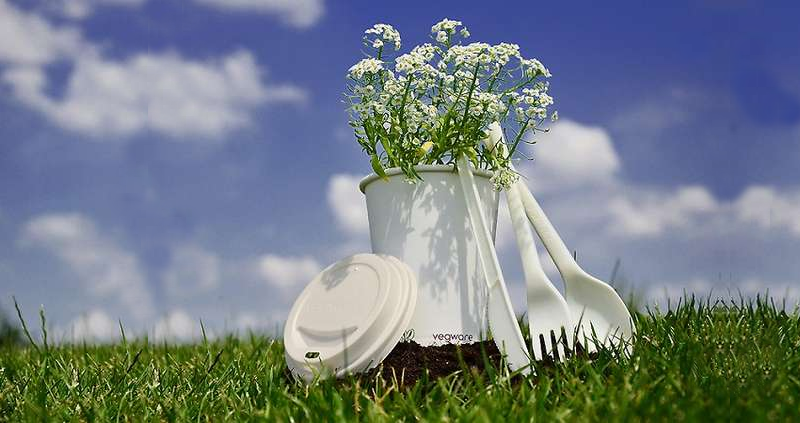Vegware

Until 2019, we were happily using Vegware in our cafes, because, though far from perfect and still single-use, it seemed better than plastic alternatives.
Vegware is a brand of bioplastic, and while it has many good qualities, we have changed some of our use of it and moved towards recycled and recyclable plastic (RPET) instead. Obviously the long term goal is to reduce the amount of single-use anything, but in the meantime, we’re responding to advice and research.
For more about our policy and practice in the area of plastic and packaging, please see Much ado about plastic – Better Food’s response to the plastic and packaging crisis.
Bioplastic vs. RPET
What is bioplastic?
Bioplastic is a material made from plants instead of petroleum. Bioplastic food packaging is usually made by extracting sugar from corn and sugarcane and converting into polylactic acids (PLAs). While it sounds great, it’s currently not so straight forward, for several reasons.
Why is it a problem?
Firstly, as an organic retailer, bioplastic made from corn starch is especially problematic as the corn used comes from monocrops imported from US that use GM and non-organic compliant herbicides.
Secondly, though technically compostable, in reality there are very few industrial composting facilities nearby that are able to deal with bioplastic. Bristol Waste and the surrounding councils use recycling facilities to deal with plastic waste, and anaerobic digestors to deal with food waste. Bioplastic is a problem because it doesn’t fall into either of these waste streams. It’s not plastic and therefore not recyclable, and it won’t break down in an anaerobic digestor because is requires an aerobic process. The two systems – composting and anaerobic digesting – are opposites, one relying on the presence of oxygen, and the other requiring the absence of oxygen. A good explanation of the two sciences can be found here on the Recycling and Waste World’s website.
Thirdly, turning plants into plastic (to make bioplastic) is currently more energy intensive than recycling used plastic.
The word ‘compostable’ might lead you to think you can put bioplastic into your home compost bin, and with some of the cardboard-like items (like sandwich boxes) you can (though only 3% of the population compost). However, this isn’t the case for the rigid items such as the hard, clear pots used in our delis, because domestic composting doesn’t reach the temperatures needed. So the best way to dispose of bioplastic packaging at home is to put it in your black wheelie bin where it will go into general waste and be incinerated (and used as Waste for Energy) or go to landfill.
What’s the solution?
There are circumstances where using bioplastic as take away packaging works really well, such as in ‘closed loop’ scenarios like university campuses, in schools and to some degree at festivals (though experiments have only had modest success, and ‘contamination’ of bioplastic bins is high).
Bioplastic may well yet have its day, but for now, we’re changing our deli pots (used for our deli hummus etc) to those made from RPET (Recycled polyethylene terephthalate – the most commonly used hard clear plastic). It’s recycled and recyclable, so while it’s certainly not perfect (no single use plastic is perfect), it is at least being reused and is reusable (in its recyclability).
Tags: Compostable packaging, Vegware
